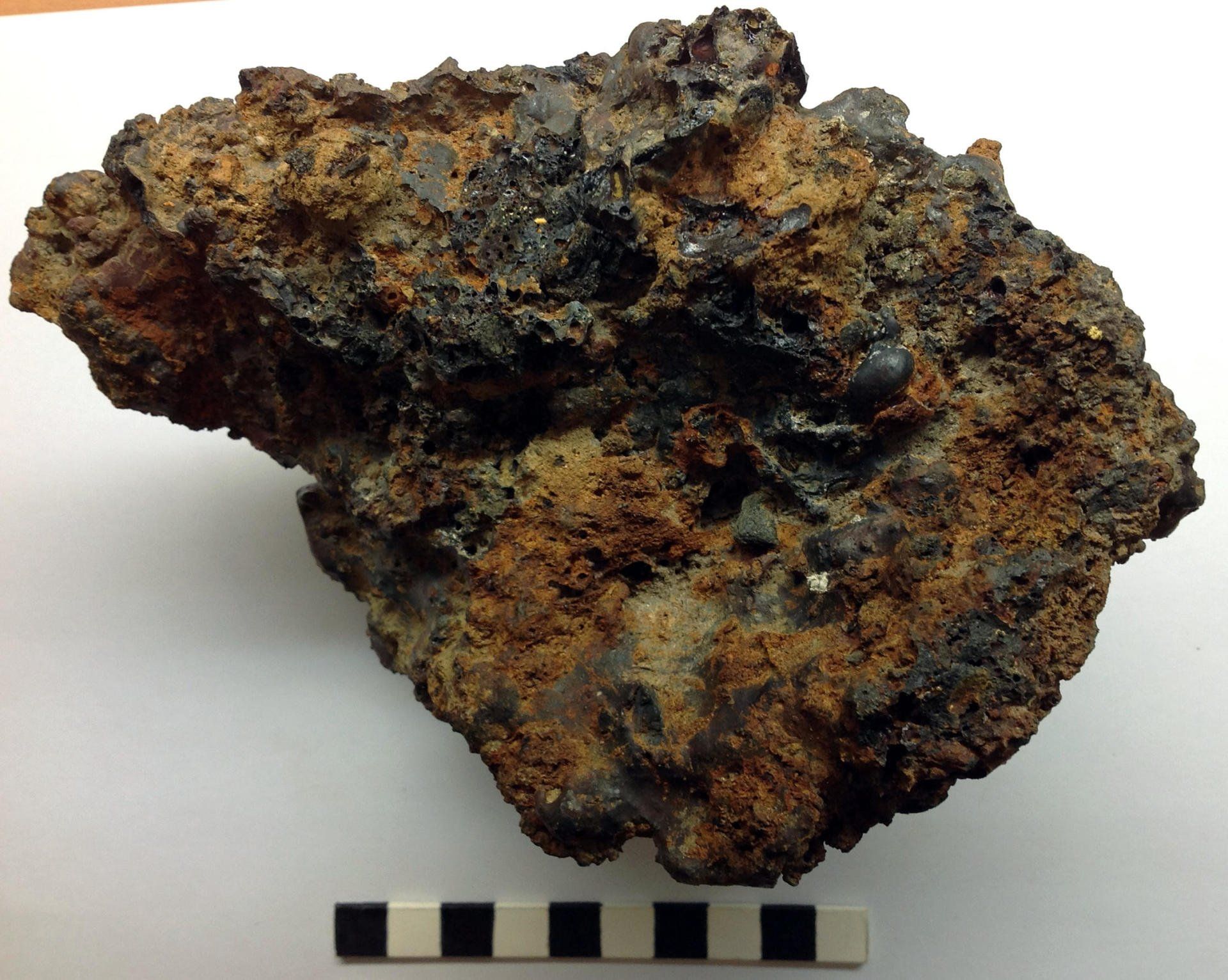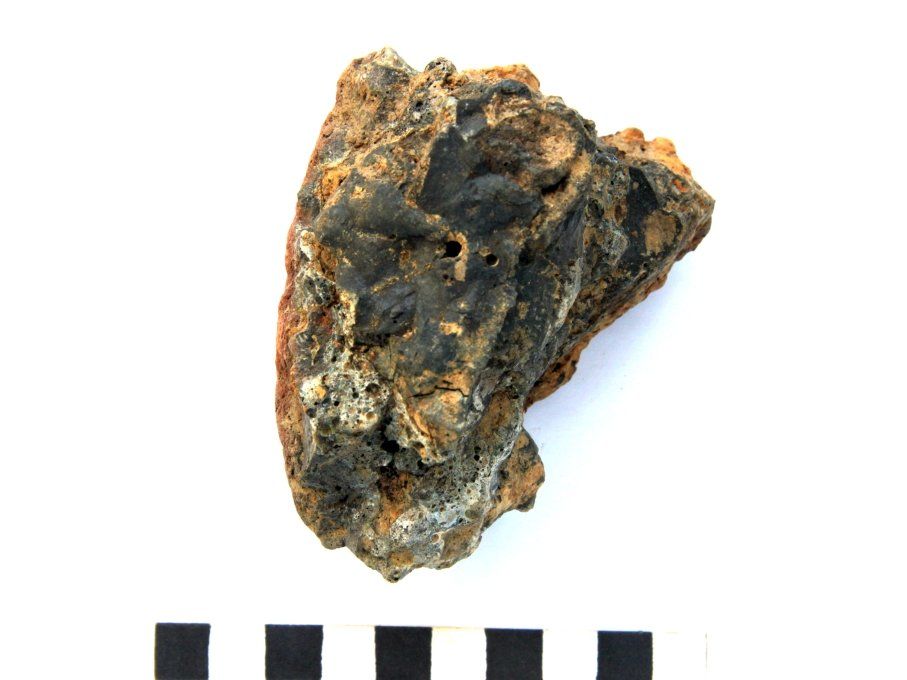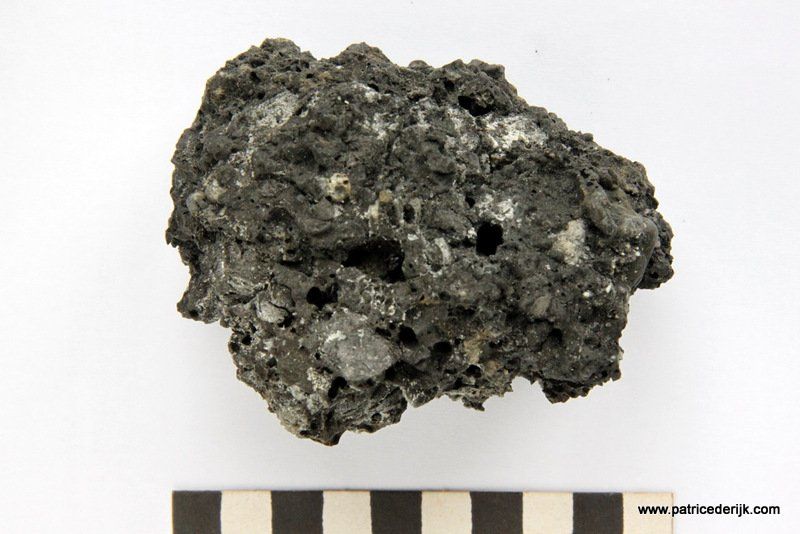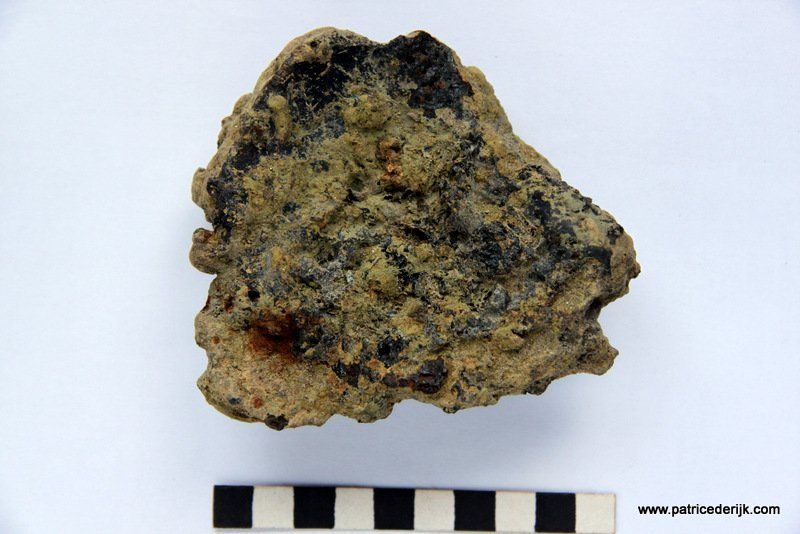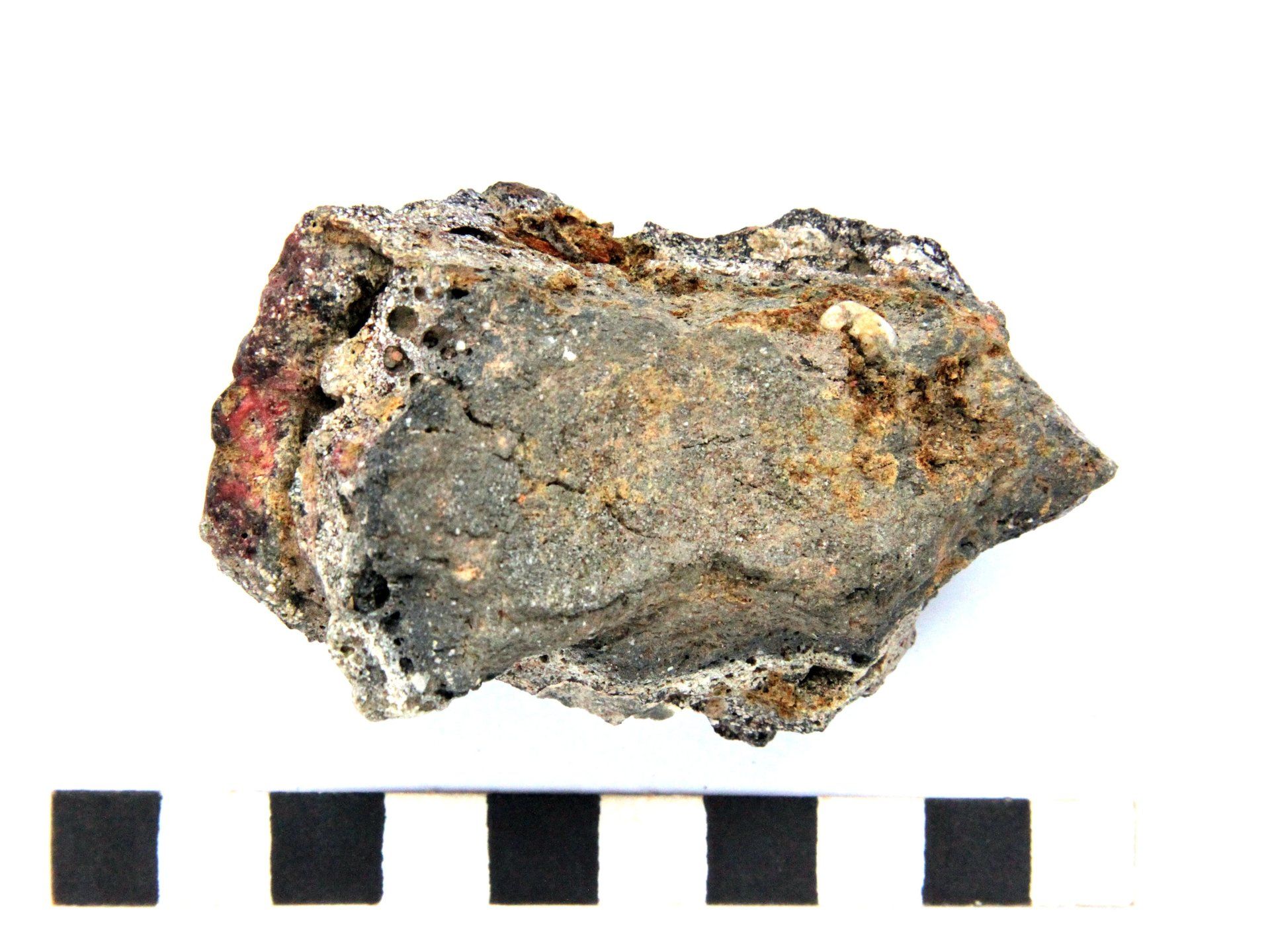
Three types of slag were recognised at the Waalbandijk-site: smithing slag, slag from copper-alloy working and coal slag. Based on context information, all slag dates from the Roman period (1st-3rd century AD). It can be concluded from the smithing slag that iron was worked in a raised heartth; typical in Roman contexts. Less typical is the use of both charcoal and coal as fuel. There is also evidence for the melting and/or smithing of copper-alloy objects. Possibly the same hearth as for the iron smithing was used, but this is not mandatory. Lastly, coal slag is the result of using coal as fuel for heathing and/or other craft activities. In the last case, fuel and the to be heated materials were seperated so a pure coal slag formed.

